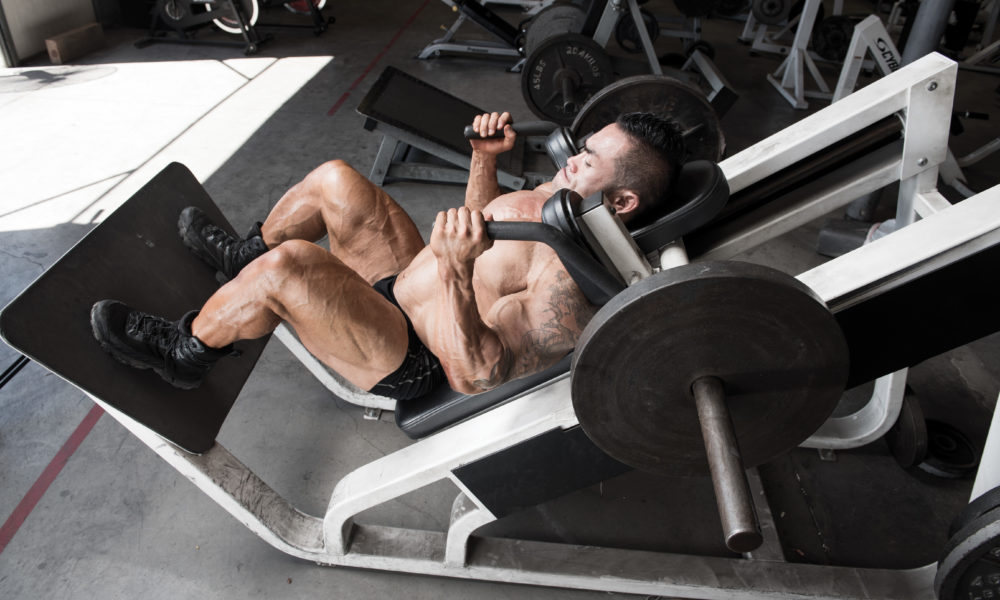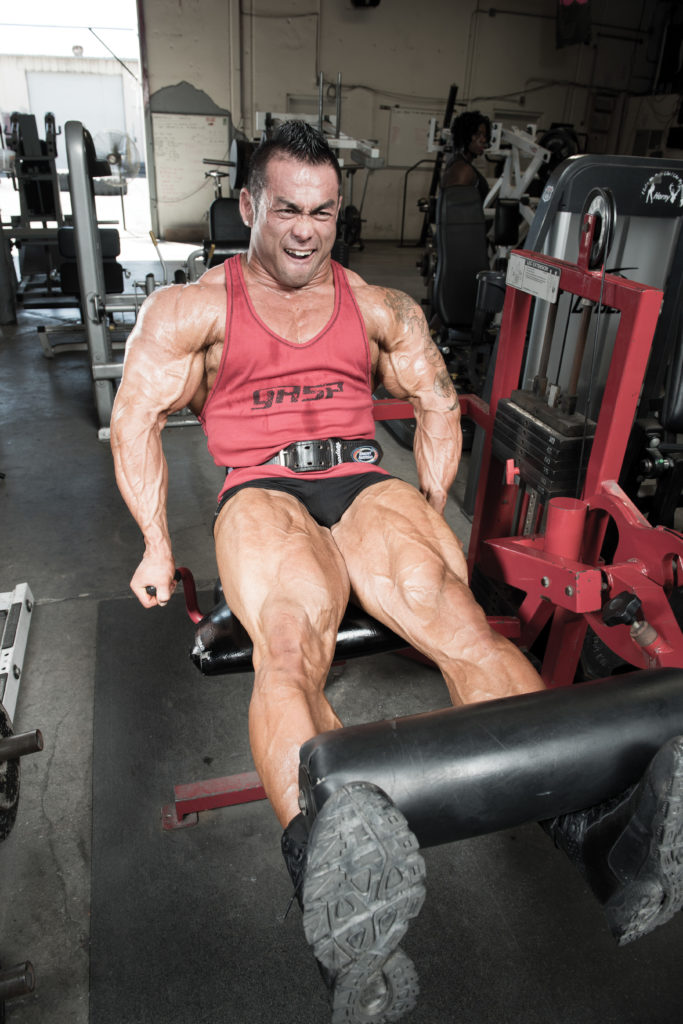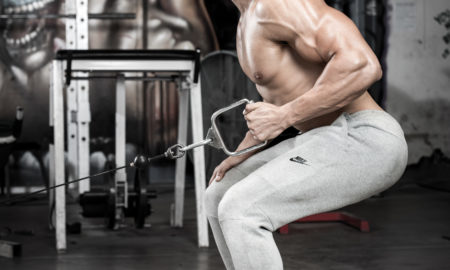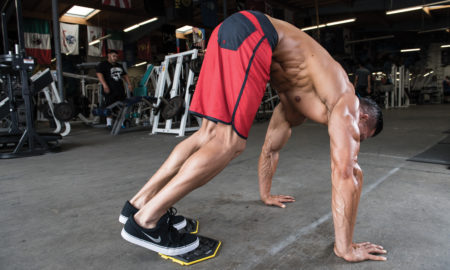

If your legs refuse to grow, try these eight proven tips for massive quadriceps growth.
By Vince DelMonte
The first thing I am going to mention is that these eight key suggestions for quadriceps training will fly in the face of common “gym lore.” And not a day goes by in the gym where I don’t hear advice from one trainee to another who totally disregards these keys facts about training quadriceps. That being stated, if you’ve been training quadriceps and been frustrated with your results, I guarantee you’ll get results from these vital tips.
- Give Up On Squats (Maybe)
Squats can be a great exercise, just not for everyone. For instance, someone with long femurs relative to their shins and trunk will have a more difficult time with traditional barbell squatting than those who have short femurs and relatively long shins and trunk. The former will bend at the hips to stay balanced, thereby creating more resistance to the spinal extensors and less to the quadriceps. Those with less ankle dorsiflexion than ideal will also tend to bend improperly and overpronate at the feet. For these people, squatting is a nightmare.
Those who have trouble squatting because of their less-than-optimal mechanics, bone lengths, height, and limited ranges of motion can experiment with tweaking their technique. From wider stances (with the appropriate outward rotation of the hips), varying levels of heel lifts, changing the relative location of the resistance, or even using a Smith Machine can impact greatly how squats work for them.
If you are one of those who do squats but they just don’t work for you no matter how you customize them, have no fear. It’s likely that other exercises will work better for you. Ignore those who criticize you for not squatting heavy because squats are not “king” for everyone.

- Train Lighter
One of the biggest mistakes people make while training legs is using too much load. Working within the one- to six-repetition ranges often results in trainees sacrificing range of motion and obliterating the intended execution. It’s important to recognize that limiting range of motion will change the line of force relative to the axis, therefore lowering the resistance despite an increase in weight. The weight is only a portion of the resistance!
Ask almost any elite bodybuilder and they will they tell you that most hypertrophy in the quadriceps occurs due to higher repetitions (12 to 30 or more) with continual tension and lower rest periods. This is likely due to the fact that the much larger demand for cellular energy to these substantial muscle tissues becomes a limiting factor to their performance.
Simply put, inducing longer-term fatigue by using higher reps, lower rest times, continuous tension, and other techniques seem to enhance quad hypertrophy more so than high-weight, lower-rep methods.
- Try More Isolation Exercises
People forget that a properly executed leg extension can be highly effective. The key here is proper execution. Leg extensions tend to be performed haphazardly with excessive spinal motion, far too much acceleration at the bottom of the exercise, plus negation of the top of the range of motion where the knee terminally extends. Any of these mistakes can make this exercise near-useless.
Attempting to isolate knee motion by keeping the hips down in the seat (leaning back and even holding the handles) to prevent bodyweight moving forward toward the knees, while keeping the trunk stable in extension and tightening the quads maximally to the very top of range, will make leg extensions feel like the most quad-focused exercise. Making the speed of the motion more consistent (not necessarily slower), it would be ideal to use the very same speed at the bottom on the range as at the top. Oftentimes this strategy requires a much lower weight than previously used, but the resistance on the quads will be much higher than you’ve ever experienced.
- Use An Active Range Of Motion
When most people say “full range of motion,” it often means going down past the limits where the weight can take you. This a big mistake! When an external load influences more motion than the active muscles can control, then too much passive motion may be introduced. When a joint, such as the knee or hip goes beyond its active length ability into a passive range of motion, optimal muscle tension cannot be developed. This scenario is not only unhelpful for muscle growth but can potentially impair joint function over time, leading to excessive joint wear and chronic injury.
“Full range” is often seen doing leg presses knees-to-chest (with the spine rolling into flexion) and squatting what is considered “ass-to-grass.” Both might be reasonable for some goals, just not for bodybuilding or maintaining healthy joints. It would be best to identify your active motion abilities, like hip flexion, knee flexion, and ankle dorsiflexion and perform your quad exercises at, or near, those boundaries. In short, you want to use full active range, not full passive range.
- Change Up Your Lunges
Lunges are one of the most beloved leg exercises, especially among bodybuilders, and particularly women. Although there is nothing inherently wrong with lunges, when it comes to optimal challenge and muscle tension, lunges tend to necessitate far too much balance and control of several joints, as opposed to developing the greatest amount of tension. This external balance challenge takes away from producing and sustaining optimal contraction of the quadriceps, plus the hip extension lends the exercise to be performed with sloppy execution, therefore a substandard stimulus. Simply slowing down steps to decelerate forward momentum of the body, plus altering stepping distance (usually shorter distance preferred) as to mimic “split squats,” can reduce or eliminate the potential downsides to lunging. Backward lunging is also a potential variation, which can enhance quad/hamstring stimulus.
- Train Quads More Frequently
If you’re training quads once a week along with other bodyparts in a split program, it might be time to increase their frequency to near twice a week. This might mean reducing overall number of sets and exercises in exchange for training them in less time with more effort.
The quadriceps are large muscles that can handle a lot of load and volume combined, and may need to be stimulated more often in many cases. Altering a split schedule to train all muscles more often (which may mean “bunching” them in workouts) often stimulates greater growth if all the rest/recovery/nutrition variables are ideal.
- Train The Hip Adductors
Although the hip adductors that encompass the inside of the thigh do not have much in the way of a functional relationship to the quadriceps muscles, it is important to point out that the large adductor muscles can take up to nearly a third of the upper leg’s tissue mass—this is a very significant portion of the leg. Spending some time in the gym training adductor muscles for hypertrophy—which are easily ignored—can go a long way to enhancing upper-leg development and creating deeper separations between the inner thigh and quads.
- Skip Aerobic Cardio
This could just as easily be the most important point on this list. When you perform chronic aerobic activity, the quadriceps are likely the most affected muscles as far as de-conditioning their anaerobic potential. Of course, over time, the quadriceps slowly lose their tension-generating capabilities (strength) and muscle loss occurs as the muscles of the lower extremity attempt to adapt to the new aerobic stimulus.
Athletes who overuse long-duration aerobic cardio almost always lose quadriceps and hamstring size. More appropriate methods for adding activity to enhance body-fat loss may be anaerobic intervals (or HIIT training) as to not introduce a negative (or opposing) stimulus to the quads, or any other muscles. Frequently, quadriceps can actually benefit in terms of muscle growth during anaerobic cardio, as they may not have been exposed to longer durations of anaerobic fatigue. IM






















You must be logged in to post a comment Login